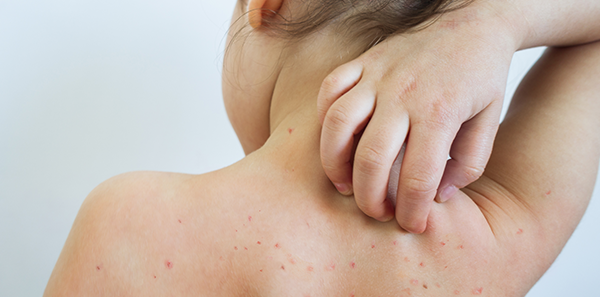
Chickenpox is an infectious disease caused by the varicella-zoster virus, the cause of herpes zoster, which only appears once in a lifetime, since exposure to the virus produces antibodies that last forever.
It appears as small itchy spots all over the body, accompanied by fever or feverishness. These spots quickly turn into fluid-filled blisters and finally into scabs that fall off in 1 to 2 weeks.
It mainly affects children between 1 and 9 years of age, being more severe in adults and adolescents, who may experience complications. Prevention is very important as it is highly contagious, through direct contact with sores or through coughing or sneezing.
- Active immunization: vaccine. It consists of administering attenuated viruses. It is clearly effective and safe. In Spain, two doses are administered (at 12-15 months and at 4-5 years of age).
- Passive immunization: antibodies. Its administration can prevent infection if administered within the first 3 days of exposure.
Treatment and Care
In healthy children, alleviating symptoms, reducing local discomfort and avoiding bacterial superinfection is usually sufficient. To do this, they should be showered once a day, with warm water and a little soap, and talcum powder, calamine lotion and oatmeal or cornstarch baths should be used.
Paracetamol should be used for pain relief. Aspirin and anti-inflammatory drugs (ibuprofen) must not be used. Acyclovir is the antiviral used, which is recommended to treat herpes zoster and for pregnant women, immunocompromised and at-risk persons.
The patient should also be isolated from people who have not had the disease and from those at higher risk (pregnant women, adolescents, immunocompromised persons, etc.) and should remain at home until the wounds have dried and the scabs have fallen off (1-2 weeks).
Disinfectants, especially bleach, as well as detergents, heat and drying, are effective in preventing infection on surfaces and clothing. Frequently washing your hands with soap and water, disinfecting with alcohol, and covering your mouth with paper napkins when coughing or sneezing are important.
The vast majority recover fully without any problems. However, the virus remains inactive or “dormant” in the body for life. One in ten adults will experience herpes zoster when the virus becomes active again for some reason, such as sustained stress or lowered defenses.












